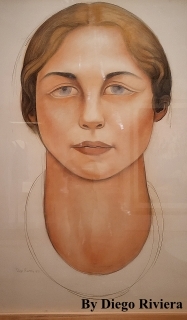Paintings and the Olympic Games in Paris in Cambridge
MY INTEREST IN the Olympic Games is limited, but that did not stop me from visiting the Fitzwilliam Museum in Cambridge, where an exhibition is being held to celebrate the 1924 Olympic Games, which were held in Paris. The exhibition, “Paris 1924: Sport, Art, and the Body”, is on until the 3rd of November 2024. Paris was, and still is, an appropriate place to hold the Olympic Games, because the man who revived this ancient Greek festival of sport, Pierre de Coubertin (1863–1937), was born in that city. The exhibition is well laid-out. Naturally, it contains many items of interest to enthusiasts of sport and the Olympic Games. Most of these are relevant to the 1924 Paris event, which was held only 10 years after the outbreak of WW1. The exhibits which interested me most were some of the paintings.

The Paris Olympics of 1924 took place during an exciting era of artistic experimentation and development. Most of the paintings in the exhibition provide evidence of that exciting period of twentieth century art. There is a painting of a gymnast by the German artist George Grosz (1893-1959), which was painted in about 1922. Works by the Italian Futurists Gino Severini (1883-1966), Enzo Benedetti (1905-1993), and Umberto Boccioni (1882-1916), figure in the exhibition. There is also a painting by Jack Butler Yeats (1871-1957), who was a brother of the famous poet William Butler Yeats. An interesting almost Cubist painting of a tennis player caught my eye. It was created in 1917 by an artist I had not heard of: André Lhote (1885-1962). A modernistic portrayal of a female runner by Willi Baumeister (1889-1955) fitted in well with the theme of the exhibition.
The paintings and sculptures chosen for the show were what made the exhibition enjoyable for me. One painting amongst them was for me the greatest surprise. It is a huge portrait depicting the face of the tennis player Mrs Helen Wills Moody (1905-1998), created in pastels in 1930. She had won two gold medals in the Olympics of 1924. I do not know why, but it was with great surprise that I saw that the artist was the Mexican Diego Riviera (1886-1957). Although the portrait is large, I had always associated Riviera with huge murals, rather than portraits and smaller paintings, of which, I have recently discovered, he created many.
I am pleased that I have seen the exhibition at the Fitzwilliam not because it has increased my interest in the Olympic Games, but because it included some fine paintings, which I had not seen before.



